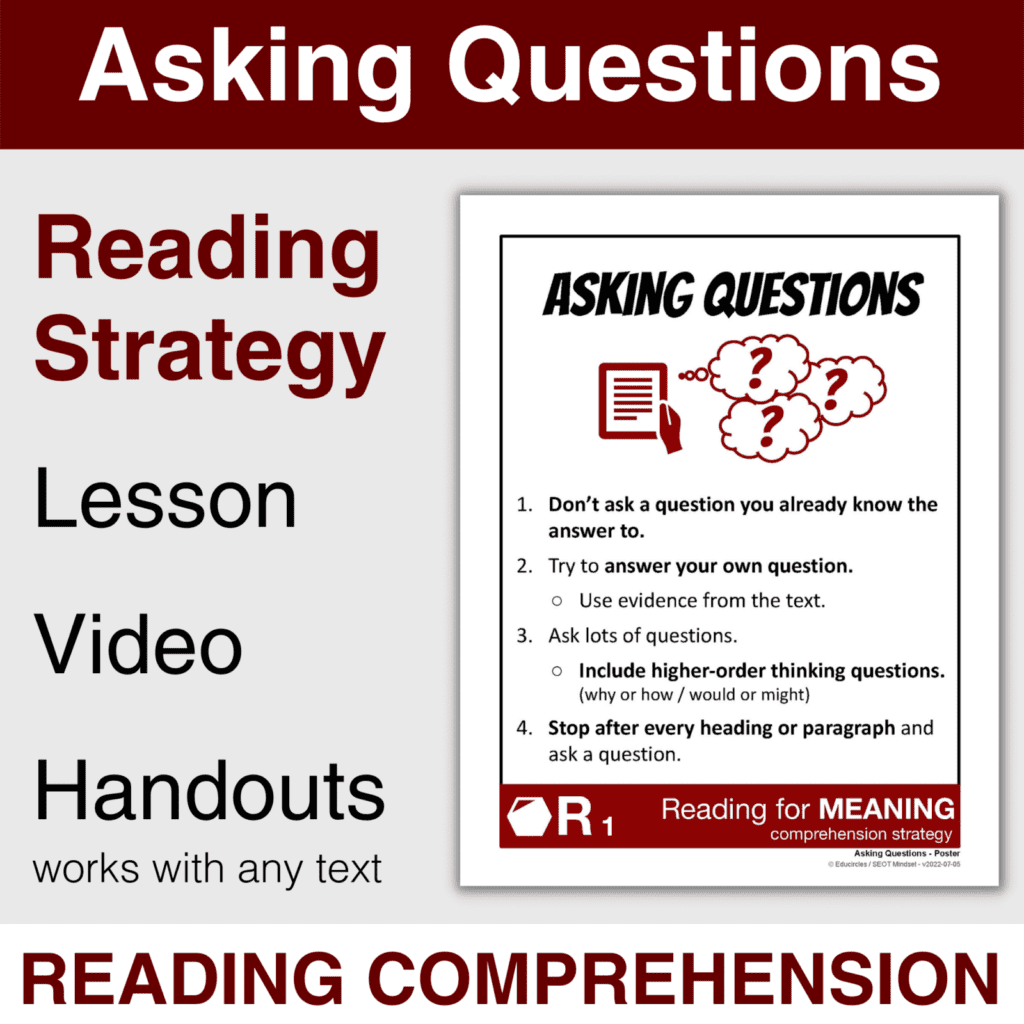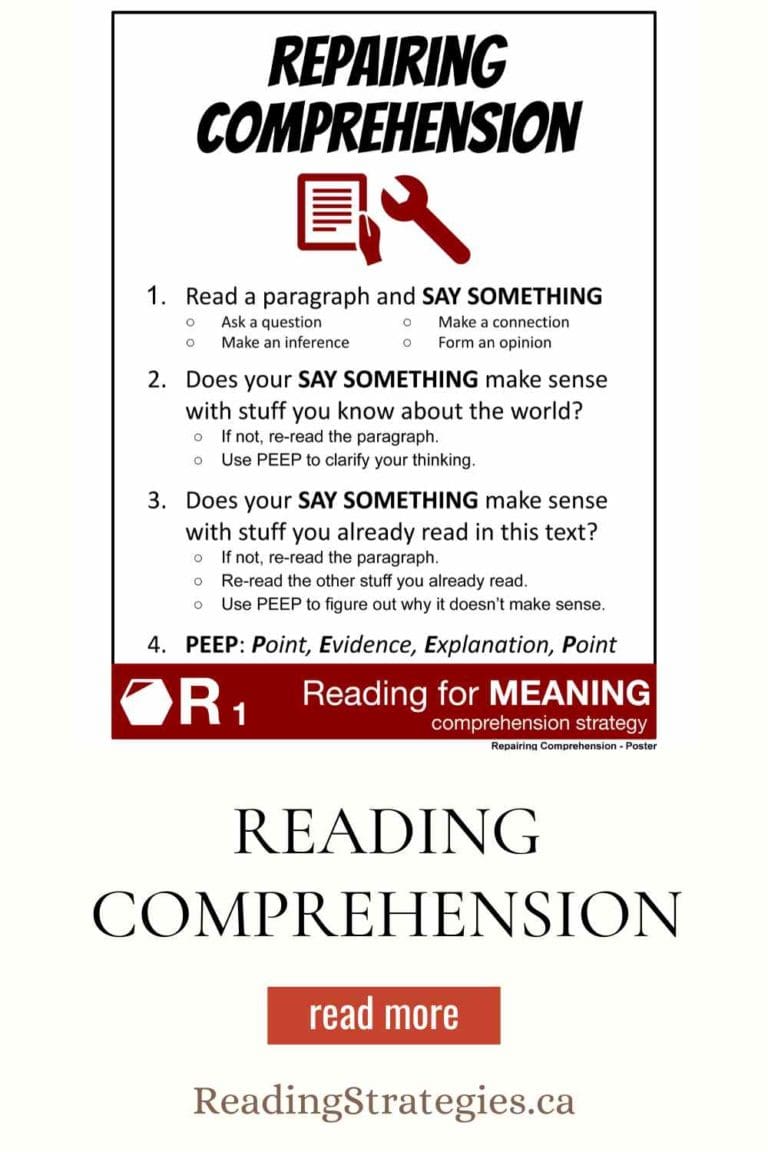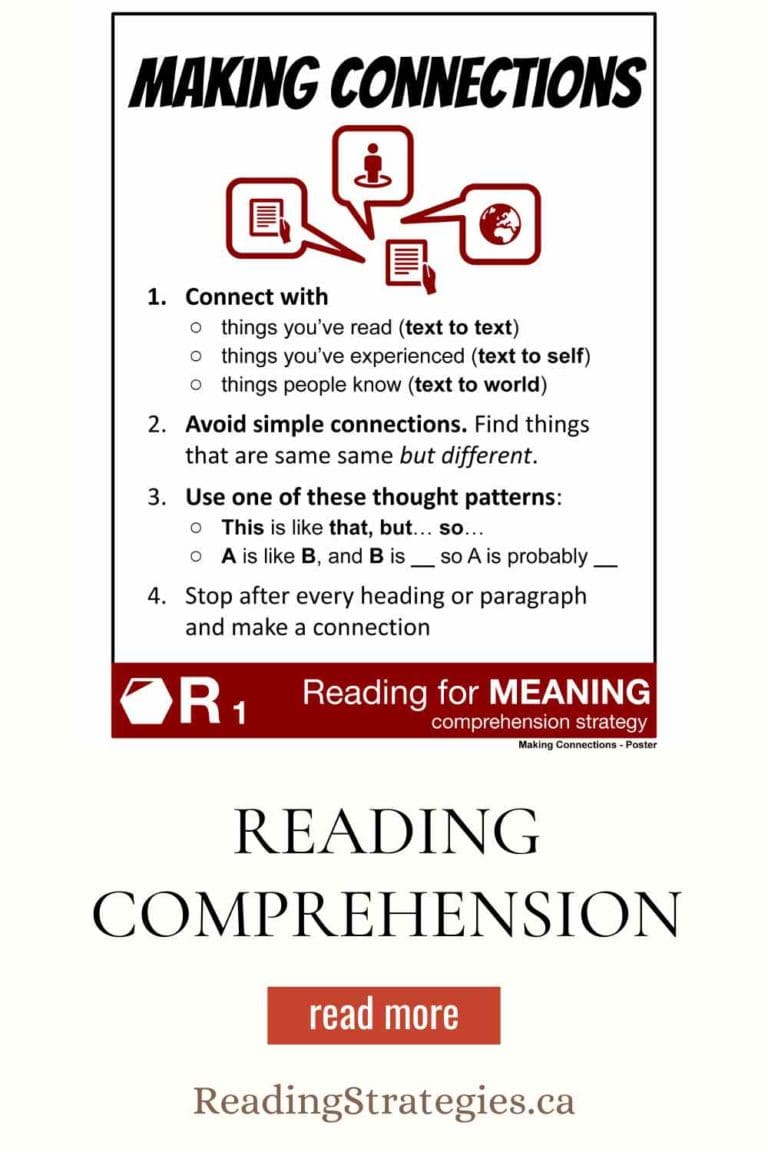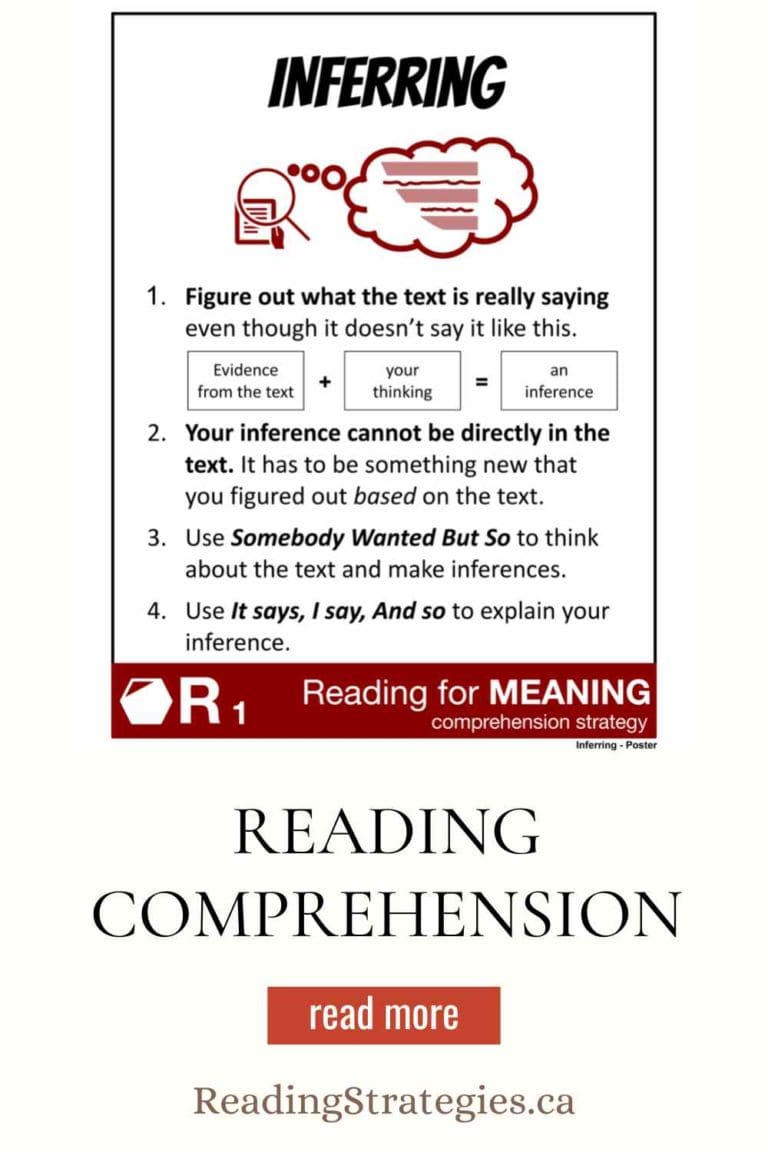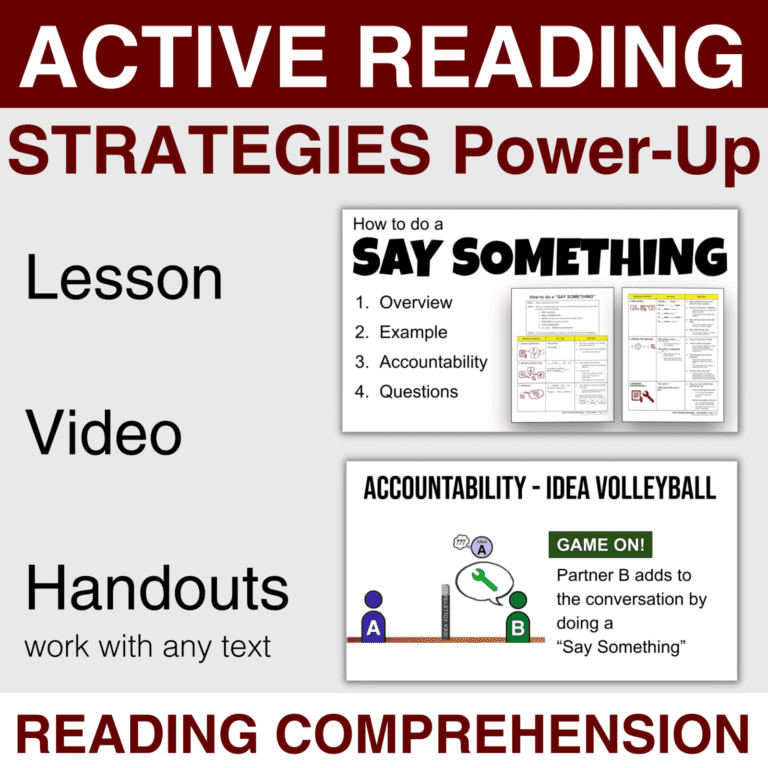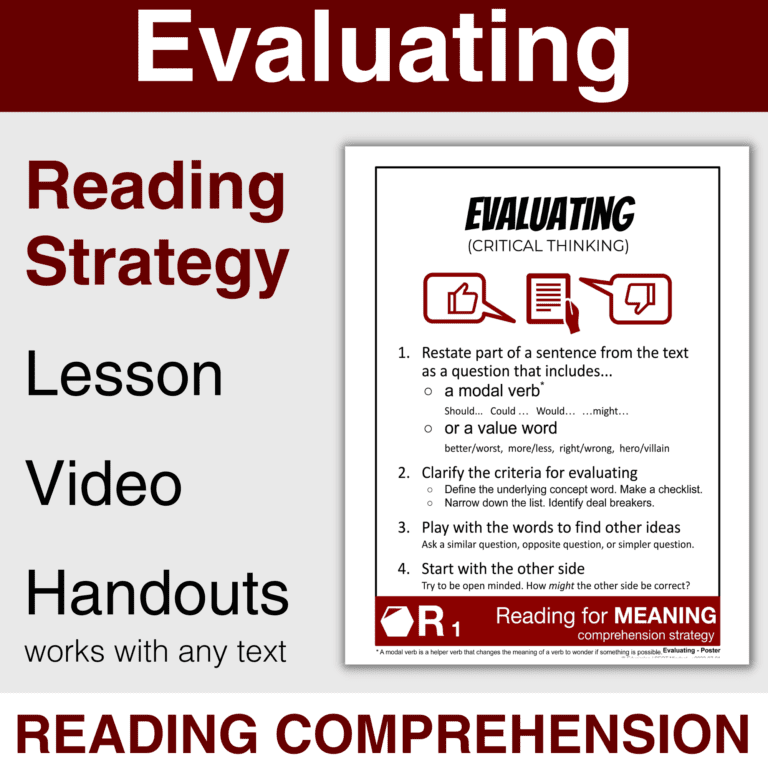Asking Questions Reading Strategy lesson plan UPDATE Jan 17, 2022
Teach FOUR PRO TIPS to help students ask BETTER questions when reading to improve comprehension.
Use this Questioning Reading Strategy to boost High School, Middle School, and Upper Elementary students.
High-interest video / slideshow lesson – perfect for your next English Language Arts class.
Students learn how to ask better questions to stay engaged while reading.
Active reading strategies can show students how to gain a deeper understanding of the text they’re reading.
How to Ask (Better) Questions – 4 PRO TIPS
- Don’t ask a question you already know the answer to.
- Try to answer your own question. Use evidence from the text.
- Ask lots of questions. Include higher-order thinking questions (why or how / would or might)
- Stop after every heading or paragraph and ask a question.
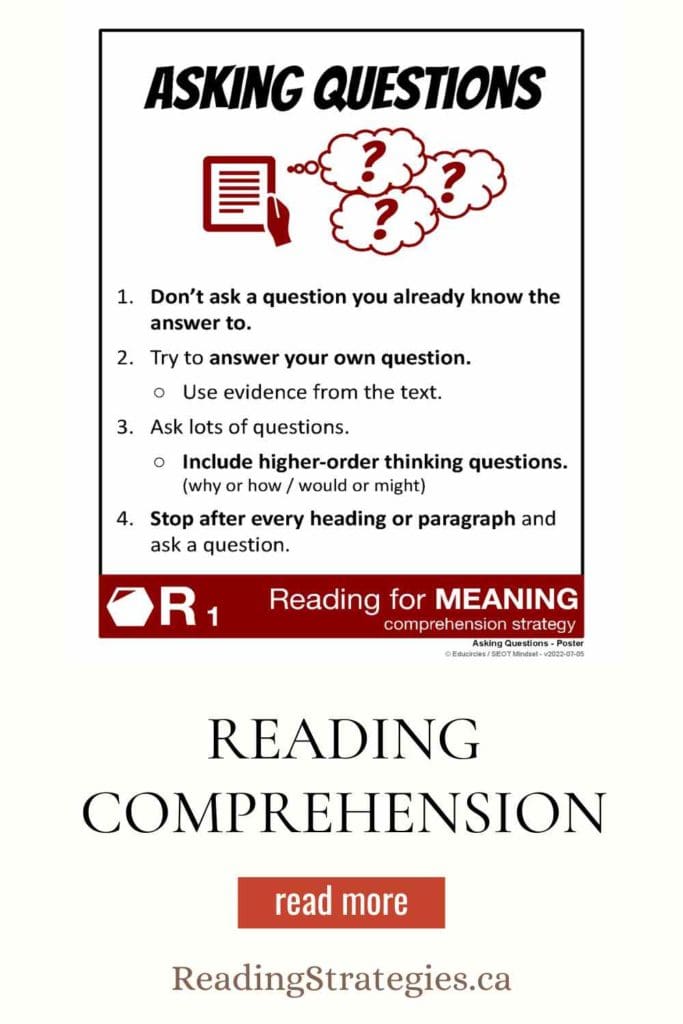
High-interest video / slideshow lesson – perfect for your next English Language Arts class.
Students learn how to ask better questions so they stay engaged while they read.
Active reading strategies can show students how to gain a deeper understanding of the text they’re reading.
Questioning Reading Strategy – Introduction
As part of our Reading for Meaning series, we’re going to look at a reading comprehension strategy called Asking Questions.
Essentially, this is where readers ask questions as they read (instead of drifting off and thinking about what to have for lunch or when class is over!)
Now, before we start the mini-lesson, let’s turn our minds on and think about active reading.
Active reading means we think about the text as we read. Your brain should be getting a workout.
- It doesn’t matter if you’re great at reading, or if you struggle at reading. At some point in life, we all will read something we don’t quite get right away.
- If we use strategies, we can get better at reading.
- Comprehension strategies help us figure out what is going on in a text
There are lots of different comprehension strategies and today we’re going to use a strategy called Asking Questions. Asking Questions is a reading strategy we use
- before we read,
- during reading, and
- after reading.
Watch the FREE Reading Comprehension Video.
Video of the Asking Questions Reading Comprehension Lesson
Here’s the YouTube link
Asking Questions Reading Strategy Pro Tips
Here are a few tips to help you use this comprehension strategy:
Pro tip #1. Don’t ask a question you already know the answer to.
Otherwise, it’s too easy and we want your brain to work.
Pro tip #2. Try to answer your own question using evidence from the text.
Look for clues in the text and then just make a guess to answer your question. We don’t have to be right at this point. We just have to think about ideas as we read.
Pro tip #3. Ask lots of questions as you read and make sure to include higher order thinking questions.
Higher-order thinking involves things like analyzing or evaluating or creating new ideas.
One way to ask higher order thinking questions would be to start your question with why or how, and to use verbs like would or might.
- So, if you ask, “how would this help the villagers?” it might help you analyse and break down an idea into multiple parts and reasons.
- Or, if you ask the question, “why would this even matter,” your answer might help you evaluate and come up with an opinion to judge the situation – you can decide whether you agree or disagree with the text.
- Or you might ask a question like, “how might the hero defeat the villain?” Then, you’re trying to create a new idea using what you already know about the situation.
Pro tip #4. Stop after every heading or paragraph and ask a question.
If you don’t get what you’re reading, then you might want to stop after every sentence.
If you are not struggling, then maybe don’t stop as often, but you need to know that strong readers are constantly wondering or thinking about things as they read.
Practice time.
Here’s a screenshot of the beginning of an article. Let’s use the reading strategy “asking questions” before we read the entire article.

We’re going to stop after every heading or paragraph to ask a question to force us to think as we read.
Teacher Classroom Tip: This is essentially a read aloud focusing on the first part of the text and modelling how readers ask questions
Look at the title of the article:
“Axe Body Spray stops a Florida school bus due to a hazardous materials incident.”
Let’s try to ask some higher-order thinking questions.
For example, “why would you have to stop if someone used body spray on a bus?”
- This is a higher-order thinking question because it uses the word “why” and it has the verb “would”.
- We have to infer an answer because it’s not given to us directly in the part that we read.
Remember to try to answer your own question.
- So, “Why would you have to stop if someone used body spray on a bus?”
- Well, maybe the driver stopped because someone was hurt.
Make sure to use evidence from the text to support your answers.
- Well, it does say right here that there are hazardous materials, so maybe that hazardous material caused some damage.
Remember, don’t ask a question you already know the answer to.
- For example, what was the spray?
- Well, we know it’s Axe Body Spray from the title.
Another thing to remember is if you’ve already read the text, don’t ask a question where you know the answer is given later on.
- So, in this case, asking, “how old were the students on the school bus?”
- Well, if you already know that in the next sentence, it says that they were “middle school students” that’s probably not a great question to ask because you already know the answer.
So, to recap using the comprehension strategy called Asking Questions.
1. Ask questions you don’t already know the answer to.
2. No matter what question you ask, you have to guess at the answer based on something it says in the text.
3. Ask lots of questions as you read, and try to include higher-order thinking questions using words like “why” or “how”
4. Today, try to stop after every heading or paragraph or section and ask a question. This forces us to think as we read and that’s what active reading is all about.
Reading for meaning is just part of the many strategies and skills that we need when we read.
And, of course, reading is an important thing to be able to do to survive and thrive in today’s 21st-century world.
It takes character to have grit and perseverance and to keep going when things get tough.
And one way to work on our character is to try to have a growth mindset which means that we recognize that if we use specific strategies, these strategies can help us to persevere and to keep on going.
- Sometimes we struggle when we read. In that case, using some of these comprehension strategies will help.
- Sometimes, we find reading easy. If reading the article today is easy, can we agree that at some point in life, you’re going to come across an article which is harder to read? At that point, if you have solid strategies, you’ll be able to persevere and figure out that tough article. Work on the strategy today to practice for tomorrow.
Asking questions is more than just a reading comprehension strategy. It’s a thinking strategy which means it’s a life strategy. It’s something we can use across the 21st-century competencies.
- We ask questions to figure out ways to overcome the challenges that build character.
- We ask questions when we try to figure how to participate in the communities we belong to.
- We ask questions when we work in groups to decide how to accomplish our goals.
- We ask questions when we communicate and trying to figure out how to get our message across clearly.
- We ask questions when we try to innovate and create new ideas.
- And, finally, we ask questions when we make decisions or think critically and fairly about a situation.
Don’t forget to like this video and subscribe to the YouTube channel.
Teachers, if you want to download this Google Slide, click here.
Good luck reading for meaning!
TEACHING TIP: Why should students be asking questions during reading?
Asking questions is a way to help students engage with the text (instead of simply passively saying the words.)
The key teaching point is to remind students to try to answer their own questions (PRO TIP #2.)
A lot of students who struggle with reading make the mistake of just asking a question and then moving on. These students haven’t really put any brain power into thinking about the text. Sometimes, it also encourages learned helplessness because then they wait for someone else to try to come up with the answer.
By trying to come up with the answer to our own question, it helps us to use other reading comprehension strategies (like inferring, predicting, or synthesizing information.)
It doesn’t matter if our answer is wrong (as long as we make a reasonable, educated guess based on evidence from the text and our own understanding of the world. i.e., an inference.)
In fact, sometimes, we might think we are completely out in space with our answer, but in fact, lots of stories have plot twists, and we might actually be right!
Later on, as we read, we can monitor the text and see if our answer was correct. This then connects with repairing comprehension and monitoring our understanding.
Ultimately, the goal of explicitly teaching the Asking Questions Reading Strategy is to show struggling readers that strong readers are strong because they do specific things when they read.
